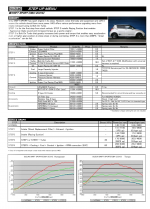tuning is imparative!
(otherwise you risk melting something due to lean at WOT!)
in WOT your stock ECU will not be in closed loop (stoich AFR 14.7 or lambda 1, within limitations of the stock narrowband capabilities) but in open loop and based on Volumetric Efficiency model (if your ECU uses VE models) trying to hit a much fatter target (AFR 12-12.8).
Much more Air means your stock WOT (open loop) models (whatever the ECU is using) are severely out of whack!
Without widebands you are not going to be able to tune your car yourself. Dyno operators do have the necessary equipment (widebands with sniffer tubes inserted into your exhaust from the back, but BEST is to sense O2 upstream of the catalytic converters with a bung and screw on widebands). If you are not familiar with DIY street tuning and the tools (software, interfaces and sensors) needed I would strongly recommend liasing with a reputable tuner (shop, person) in proximity. (He needs direct hands on access to your car!) (yes, some can do "remote tuning" but that involves you to have the sensors, logging and flashing software and your ability to exchange log files, receive tune files, flash them onto your ECU yourself, iteratively!!!)
uhhmm ... did I say somewhere eboosting is NOT cheaper than a bolt on mechanical boost (charger, blower) KIT (which usually comes with a base tune and/or tuning support from the seller)?




